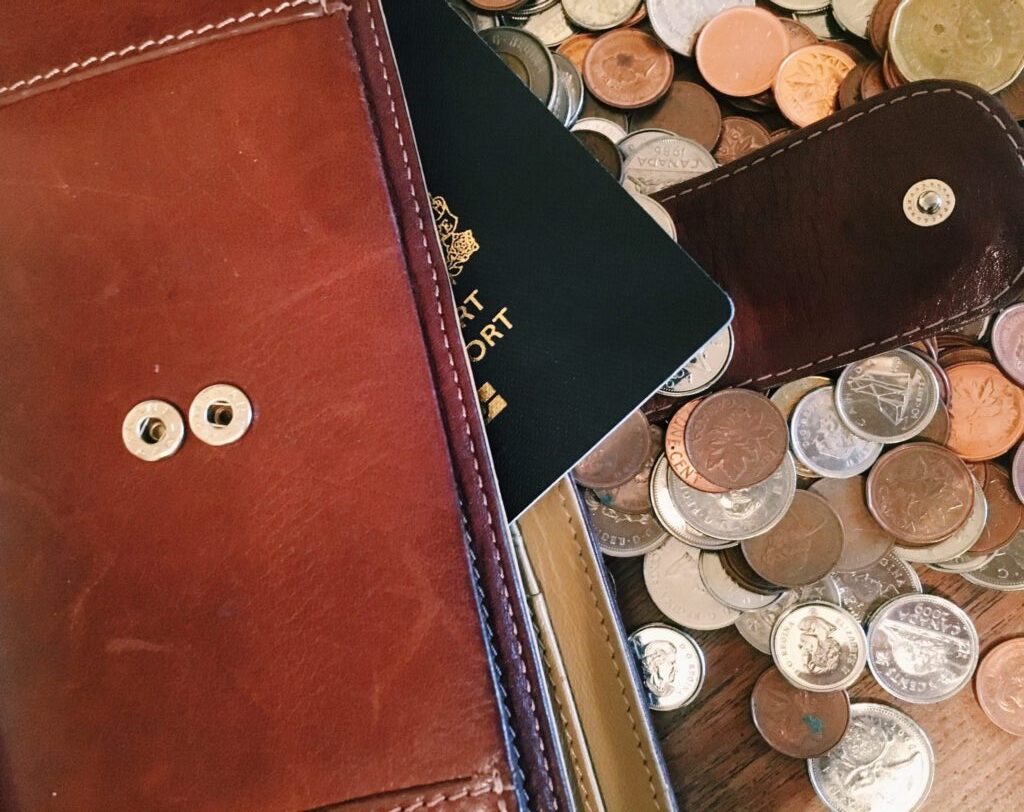When financial struggles begin to spiral out of control, bankruptcy may seem like the only way out. Yet recognizing the warning signs of bankruptcy early and seeking professional advice can help you take the right steps to avoid or manage the situation more effectively. Bankruptcy is a serious financial decision with long-lasting consequences, so it’s crucial to be aware of the red flags that indicate you may be heading in that direction. Fortunately, there are alternatives to bankruptcy, such as the consumer proposal, which may offer a more manageable solution while enabling you to reduce your unsecured debts by up to 80%. In this article, we’ll explore the common warning signs of bankruptcy, how to recognize them, and how exploring debt relief alternatives can help you regain control of your finances before it’s too late.
The warning signs of bankruptcy
Recognizing the warning signs of bankruptcy early can help you take proactive steps to avoid the devastating consequences it can have on your financial future. By identifying these red flags, you can explore alternative solutions to regain control of your finances before it’s too late.
1. You’re struggling to make minimum payments
One of the first red flags that bankruptcy may be on the horizon is the inability to keep up with minimum payments on credit cards, loans, and other financial obligations. If you’re constantly juggling payments and barely making a dent in the balances, it can be a sign that you’re living beyond your means. According to Statistics Canada, the average Canadian household now carries $1.86 in debt for every dollar of disposable income. With this level of debt, many individuals and families find themselves struggling to meet even the minimum payments, leading to financial distress.
What to do:
Instead of pushing payments to the back burner, consider working with an experienced Licensed Insolvency Trustee at Spergel to consolidate your debt into a single, more manageable monthly payment. For some, a debt management plan (DMP) could help reduce interest rates and allow for gradual repayment. If your debts are significant, a consumer proposal could provide a structured way to reduce and pay off your debt while avoiding the permanent damage of bankruptcy and put an immediate end to collection calls.
2. You’ve taken out loans to pay bills
Taking out new loans to pay off existing bills or borrowing from one source to pay another is a dangerous cycle that could indicate that you’re heading towards bankruptcy. If you’re constantly relying on credit to meet your basic needs or cover other debts, this is a clear financial warning sign. In fact, a recent NerdWallet report indicates that 69% of Canadian adults used credit cards to pay for essential purchases in the past 12 months.
What to do:
If you find yourself in this situation, it’s time to pause and reassess. Consolidating your debts into one manageable loan or speaking with a Licensed Insolvency Trustee might allow you to explore options such as a consumer proposal or even debt restructuring, both of which could offer long-term relief without the drastic impacts of bankruptcy. You can submit a proposal to your creditors that can reduce your debt by up to 80% and consolidate your payments into one affordable monthly amount. This alternative to bankruptcy allows you to repay a portion of your debt over a period of up to five years, offering a structured and sustainable solution. At Spergel, we have a 99% acceptance rate on any consumer proposals we file.
3. You’ve maxed out credit cards
If your credit cards are near or at their maximum limit, and you’re struggling to pay them off, this is a warning sign that you may not be able to pay off your debts without significant changes. The average Canadian consumer carried $4,200 in credit card debt in 2023, and high-interest rates of 19% or more make it difficult for many individuals to pay down this debt. This can quickly spiral into a serious financial issue.
What to do:
Consider seeking professional help to create a plan for repaying your credit cards. Depending on the situation, a debt consolidation loan or balance transfer may give you a lower interest rate, allowing you to reduce your credit card debt faster. Alternatively, a consumer proposal can help reduce your overall debt and avoid the long-term damage to your credit that comes with bankruptcy. A Licensed Insolvency Trustee will negotiate on your behalf with creditors to settle for a lesser amount, allowing you to repay a portion of your debt over time, rather than being overwhelmed by interest and penalties.
4. You’re receiving collection calls
If you’re frequently receiving calls from creditors or collection agencies, it’s a clear sign that your debts are not being paid as agreed. These calls can be stressful and anxiety-inducing, but it’s important not to ignore them. According to our recent study on Debt Load and the Impact to Psychological Wellbeing, 50% of Canadians report that financial issues have contributed to difficulty sleeping. Ignoring calls from creditors or hoping the problem will go away only increases the risk of bankruptcy.
What to do:
Don’t wait until the situation escalates. A debt settlement program may be an option, where you can work out an arrangement to pay less than what you owe. If this approach isn’t feasible, a consumer proposal could offer a more comprehensive solution by freezing interest and negotiating a fair payment plan. Once you’ve established a clear understanding of your debt, you can begin negotiating with creditors and stop the collection calls. Once your proposal is filed, creditors are legally obligated to cease all collection activities against you, providing you with immediate relief from harassment. This alternative allows you to settle your debts without resorting to bankruptcy and its more severe consequences.
5. You’re using savings or retirement funds to pay bills
If you find yourself dipping into savings or even borrowing from your retirement funds (like an RRSP) to pay for daily expenses, it’s a dangerous sign that you’re financially stretched. The Office of the Superintendent of Bankruptcy Canada (OSB) reports that many Canadians facing financial difficulty end up depleting their savings or retirement accounts to keep up with mounting debts, which jeopardizes their financial future.
What to do:
Rather than depleting your savings, focus on creating a budget that helps you prioritize essential expenses. If your situation is more serious, consider alternatives such as debt refinancing, or even explore a consumer proposal to reduce your debt without sacrificing your savings or retirement funds. By consolidating your debts into one manageable payment, you may be able to avoid bankruptcy while preserving your long-term financial security. An experienced Licensed Insolvency Trustee can help you understand how this option works and how it might be the right solution to your financial troubles.
6. You’re not sure how much you owe
If you’re unsure of the exact amount of debt you have or can’t keep track of your financial obligations, it may indicate that your financial situation is becoming unmanageable. This could also signal that you’re avoiding dealing with your debts altogether, which can lead to more severe consequences down the road. As of 2022, nearly 45% of insolvencies in Canada were filed under Consumer Proposals, where the debtor’s total amount of debt was renegotiated and reduced.
What to do:
Take control of your finances by gathering all your financial statements, listing all debts, their amounts, and interest rates to get a clear picture of what you owe. A credit counselling service can help you organize your finances and create a plan to tackle the most pressing debts first. If necessary, a consumer proposal can help you to reduce your total debt and manage your repayments. A Licensed Insolvency Trustee can assist you with this process, allowing you to settle your debts without the drastic effects of bankruptcy.
7. You’re constantly feeling stressed or anxious about money
Financial stress can take a serious toll on both your mental and physical health. If you’re consistently worried about money, unable to sleep, or constantly thinking about your bills and debts, it’s important to recognize that your financial health directly impacts your overall well-being. The Canadian Mental Health Association (CMHA) also reports that financial stress is a leading cause of mental health issues in the country, with almost half of Canadians reporting that money-related anxiety negatively impacts their well-being.
What to do:
Rather than letting stress and anxiety overwhelm you, consider speaking to a financial professional who can help you explore your options. Sometimes, simply consolidating your debt or getting a debt settlement can alleviate immediate pressure. For more extensive debt challenges, a consumer proposal could offer a structured repayment plan that works for you. A consumer proposal can significantly reduce the burden by allowing you to settle your debts under manageable terms, providing you with the breathing room you need to regain your financial health. A Licensed Insolvency Trustee can guide you through the process, giving you peace of mind that you’re making the right choice.
Warning signs of bankruptcy: FAQs
Here are some of the most common questions we receive about the warning signs of bankruptcy:
What are the red flags of bankruptcy?
The red flags of bankruptcy include struggling to make minimum payments, relying on loans to pay bills, maxing out credit cards, receiving constant collection calls, using savings or retirement funds to cover expenses, and feeling overwhelmed by financial stress. If you notice these warning signs of bankruptcy, it’s crucial to take action early to explore alternatives like debt consolidation or a consumer proposal before the situation worsens.
What are the indicators of bankruptcy?
The warning signs of bankruptcy include an inability to keep up with debt payments, borrowing to pay existing debts, maxing out credit cards, frequent collection calls, dipping into savings or retirement funds, and experiencing severe stress or anxiety due to financial struggles. Recognizing these early warning signs can help you seek solutions, such as debt restructuring or a consumer proposal, before bankruptcy becomes necessary.
How do you know if you have bankruptcies?
To know if you have declared bankruptcy, check your credit report, which will show any bankruptcy filings. You can also contact the Office of the Superintendent of Bankruptcy (OSB) to confirm whether a bankruptcy has been recorded under your name. Additionally, if you’ve gone through a formal process with a Licensed Insolvency Trustee or received a discharge from bankruptcy, it will be officially documented.
What is a financial red flag?
A financial red flag is a warning sign that indicates potential financial trouble ahead. It can include behaviors such as consistently missing payments, taking on more debt to pay existing debt, maxing out credit cards, or failing to track your financial situation. These red flags signal that your financial health may be at risk and it may be time to seek professional advice or take corrective action before the situation worsens.
What to do next: seek professional advice
If you recognize any of these warning signs of bankruptcy in your own financial situation, it’s important to act quickly. Early intervention can help you avoid the severe consequences of bankruptcy, such as damaged credit and a prolonged recovery period.
Consult a Licensed Insolvency Trustee
At Spergel, our team of experienced Licensed Insolvency Trustees can help you evaluate your options, including consumer proposals and other debt relief solutions, to create a plan that works for you. Whether it’s filing for bankruptcy, negotiating a consumer proposal, or exploring other alternatives, our professionals are here to guide you every step of the way.
Take the first step today
The first step in taking control of your financial future is to be familiar with the warning signs of bankruptcy, and to reach out. At Spergel, we offer a free, no-obligation consultation to help you understand your options and take action before it’s too late.
Recognizing the warning signs of bankruptcy early on is crucial to taking the necessary steps to regain your financial footing. If you’re facing any of the red flags discussed here, don’t wait until things spiral out of control. Take action now by reaching out to a Licensed Insolvency Trustee at Spergel. With the right guidance, you can explore alternatives like a consumer proposal and find a solution that works for you, starting your journey toward financial recovery without the need for bankruptcy.



















